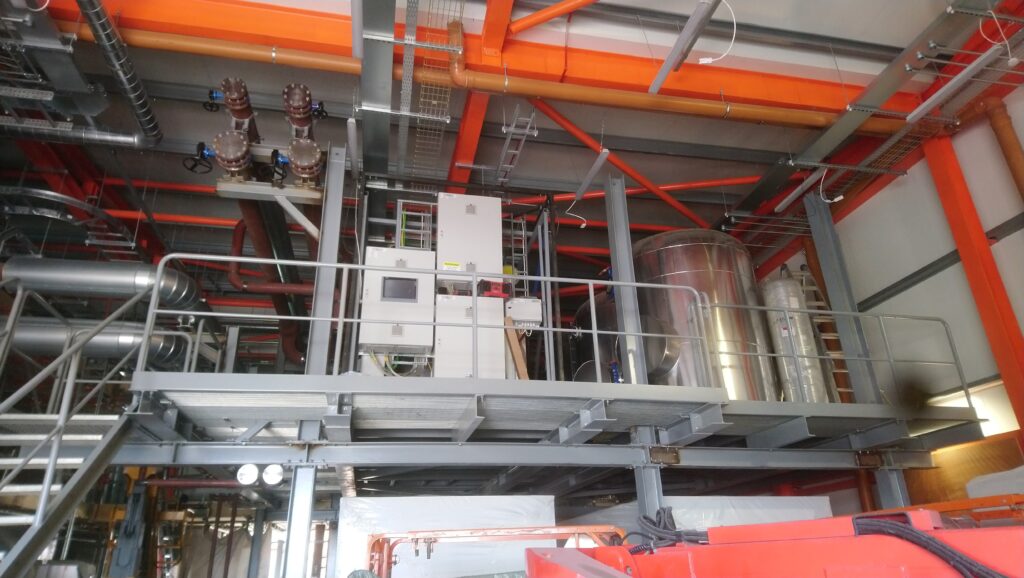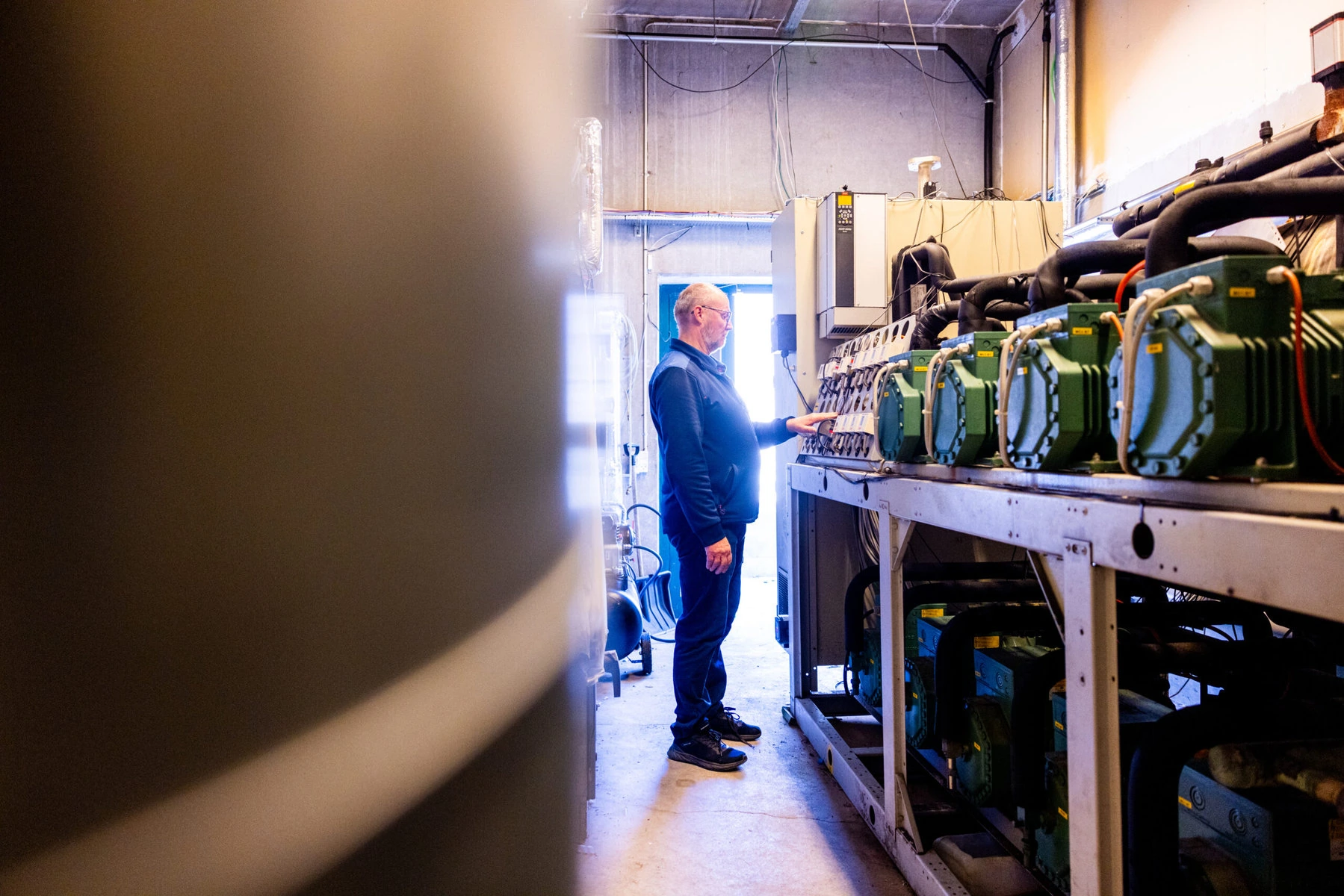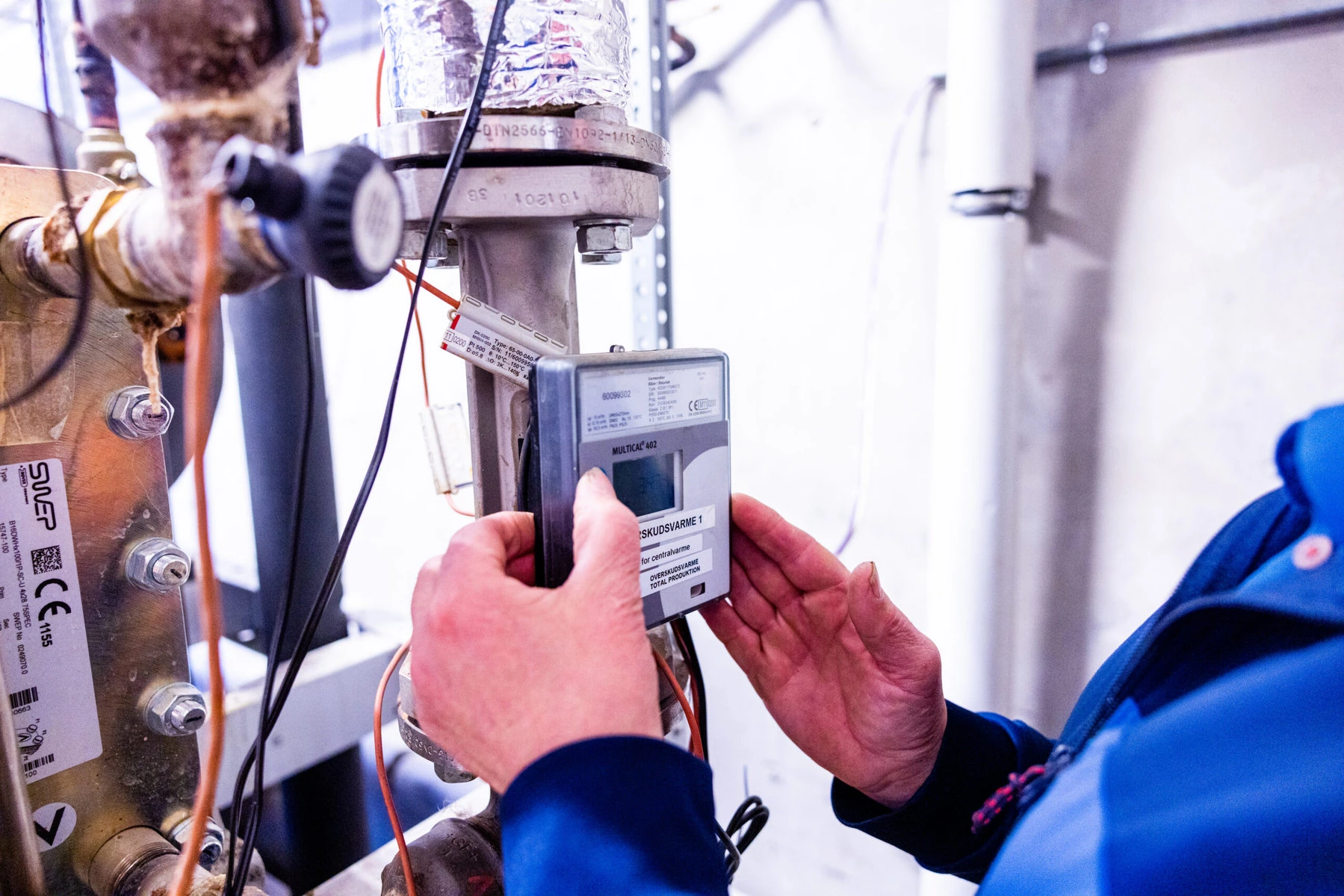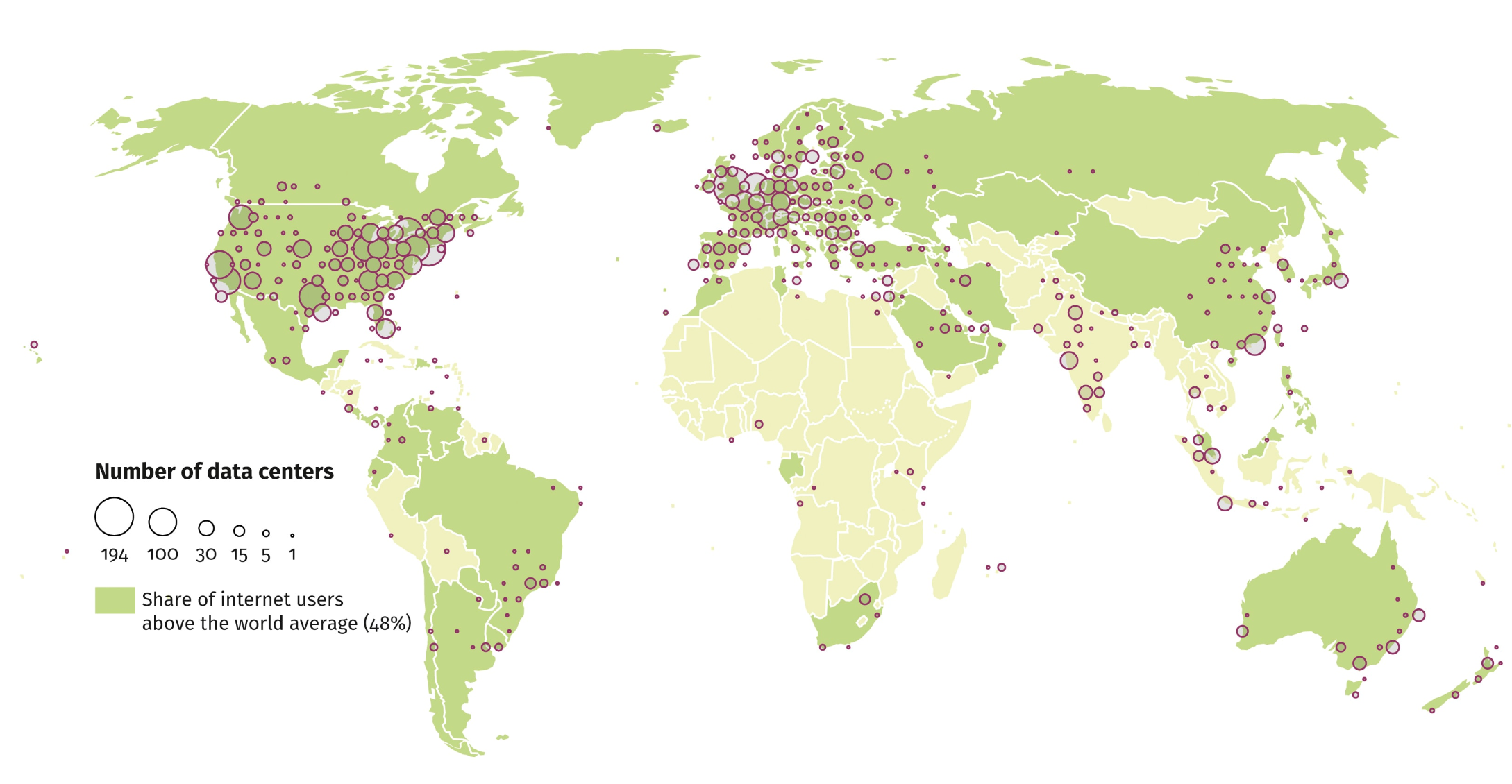On January 3, 2023, the 5,000 students who attend Technological University Dublin returned from their winter holiday to their cold suburban campus in Tallaght. At a time of year when the temperature often falls to near freezing, they would have rushed through the revolving door into the toasty, enveloping air of the main building’s glass entrance.
What few of them probably knew was that the warm air that greeted them came not from a traditional gas or electric boiler like most other buildings in Dublin. It came instead from a large hangar-like warehouse a kilometer down the road, where piping-hot servers stored terabytes of online shopping information: an Amazon data center.
The university, along with the nearby South Dublin County Council building, were the first customers of a new district heating system that became operational in mid-December. When servers in the Amazon data center process information, they emit excess heat that would usually enter the atmosphere as waste. The city’s new heating system instead recovers this heat for reuse, channeling it into buildings as an unusual form of green energy.
“It’s essentially a plug and play replacement for [the old buildings’] gas boilers,” says John O’Shea, who leads the heat and electricity division at Dublin’s energy agency Codema. “It operates at similar temperatures, so they don’t need to undergo massive fabric upgrades or change radiator sizes. They can just take advantage of it.”

Data centers contain servers, which produce heat as they process information. The bigger the data center, the more heat emitted. In Amazon’s Tallaght data center, this heat is drawn from the servers into an “air handling unit,” where a coil of cold water cools it. The water, its own temperature now having risen to about 25 degrees Celsius (77 degrees Fahrenheit), then passes through a pipe to an energy center just outside the warehouse, where several heat pumps condense it until its temperature rises to 85 degrees Celsius (185 degrees Fahrenheit), or 70 C / 158 F degrees in warm weather. The system then pumps this scalding hot water through pipes to its destinations, where it enters the buildings’ own heating systems.
Because the water must be piped to its destinations –– and stay hot while in transit –– district heating systems are best suited to areas with what O’Shea calls a “high heat-demand density.” (In scientific terms, that means at least 120 terajoules per square kilometer.) To identify such an area, Codema’s team created a digital heat-demand map. Tallaght, with its dense jungle of residential estates and public facilities, including two hospitals, was a perfect fit.
O’Shea and his team at Codema estimate that the Tallaght project is saving 1,400 tons of CO2 emissions every year, which equals a reduction of about 60 percent compared to the previous system of individual on-site boilers. Once fully operational, the system is expected to heat 47,000 square meters of local public buildings, 3,000 square meters of commercial buildings, and 135 apartments. Several other residential developers have also expressed interest.
The Tallaght project is one of a growing number of district heating systems using waste heat from data centers, which guzzle 1 to 1.5 percent of the world’s electricity supply. Meta claims its data center in Odense, Denmark, delivers enough hot water to heat 6,900 local homes. Amazon’s headquarters in Seattle has used excess heat from a data center in the Westin Building Exchange since 2019. In March last year, Microsoft and Fortum, the Finnish energy company that maintains the Tallaght system, announced they were developing perhaps the most ambitious yet: a system that would deliver heat to 100,000 Helsinki residents, saving 400,000 tons of CO2 every year.
Such systems are becoming more popular because waste heat is treated as a renewable energy source. “You’re basically reusing something that’s currently being dumped, so there’s no additional climate impact to it,” O’Shea said.

In fact, Amazon provides the waste heat from its center in Tallaght for free, as it reduces the cost of energy required to power its cooling mechanism. Local organizations and residents in Tallaght, one of the poorest areas of Dublin, will then be able to access heat 10 to 15 percent cheaper than alternatives once connected. By 2050, O’Shea says that 87 percent of buildings in Dublin County could be eligible for similar district heating systems.
District heating systems can repurpose waste heat from facilities other than data centers. Danish energy company Danfoss has installed its heat recovery units in 165 supermarkets across Europe, the majority in Denmark. Its units capture heat emitted by the supermarkets’ refrigerators and redirect it back into the stores’ own heating systems. The company also sells it to local district systems to heat houses, gyms and swimming pools. Supermarket chain Meny, one of Danfoss’s clients, has reduced the net energy bill of one of its stores by 90 percent.
“None of my 55 employees noticed anything,” says store manager Morten Birkebaek. “We have all the hot water we need for cleaning and restrooms, and all the heat we need year-round.”
Crushed by negative news?
Sign up for the Reasons to be Cheerful newsletter.According to research published in 2019, Europe holds 925 terawatt hours of theoretical waste heat potential — about the same as Ukraine’s total energy consumption in 2021. But Hussam Jouhara, head of the Heat Pipe and Thermal Management Research Group at Brunel University London, says that the large initial investment to build the required systems deters many companies. Jouhara says that it can take two years or longer for investors to earn their cash back, which is too long for most.
“Long return-on-investment is really not appealing to companies,” Jouhara said.
Russia’s invasion of Ukraine may be changing this, however. Rising energy prices are generating increased interest in district heating systems, which have become more cost competitive. Last year, Jouhara’s economic analysis of one steel plant revealed that it could take 28 months for the company to earn its investment back. When he recalculated this year, it was 13 months. His phone, he says, is now ringing off the hook with calls from industry executives. “They have been chasing me since the beginning of the war.”
Rising energy prices are generating increased interest in district heating systems, which have become more cost competitive. Credit: DanfossThere are other obstacles. Waste heat from data centers like Amazon’s in Tallaght isn’t all that hot, reducing the efficiency of the system, as condensing the water to make it hotter requires energy. What’s more, many companies aren’t even aware that they produce a considerable amount of waste heat. In one study, 20 percent of the participating companies did not know if they produced it, and a further 43 percent lacked the information to consider it. “The industry is very cautious about any new approach,” Jouhara said. “As you can imagine, when you have something new you’re worried about, are you going to be the first to try it?”
Despite the caution, interest in waste heat recovery systems is growing. O’Shea and his team at Codema have discovered 529 potential sources around Dublin using their heat map. These include power stations, refrigerated warehouses and even electrical transformers.
One of Dublin’s new district heating systems will capture heat from a waste incinerator plant in Poolbeg, an urban peninsula jutting into Dublin Bay. The plant burns waste to produce electricity using turbines, which require a cooling mechanism to operate. O’Shea says they plan to use the same method as in Amazon’s Tallaght data center. This system will be much bigger though. The agency will initiate the government procurement process this year. O’Shea expects the project to heat the equivalent of 40,000 Dublin homes.










